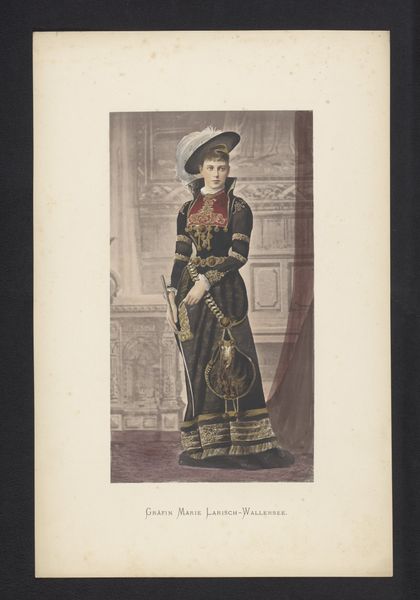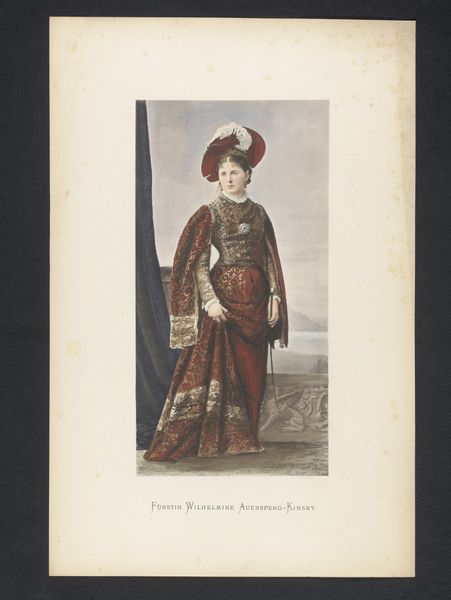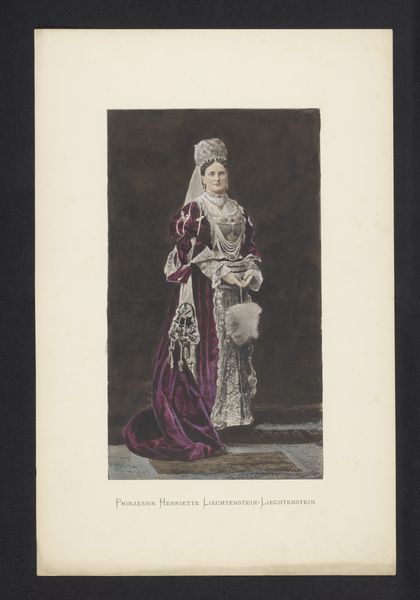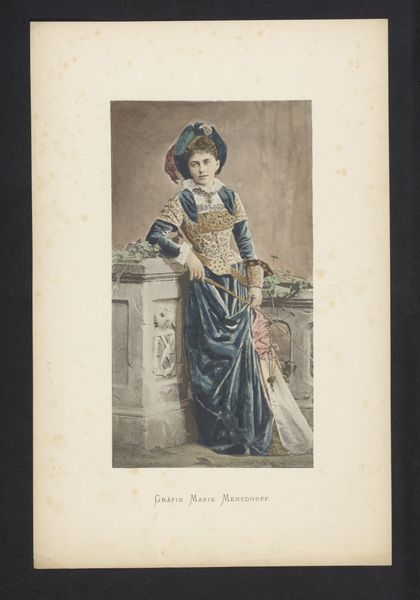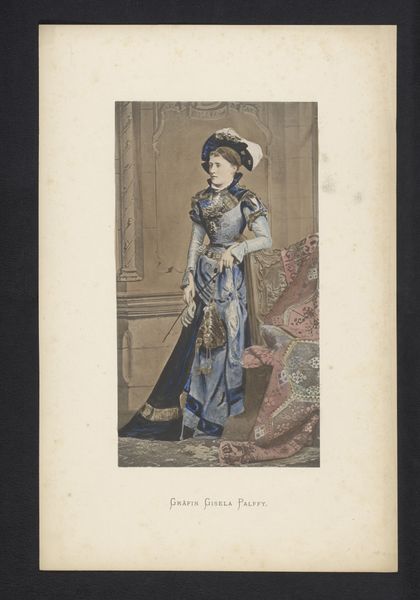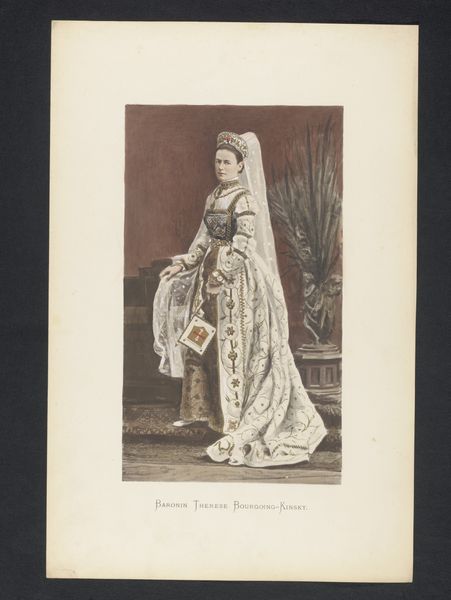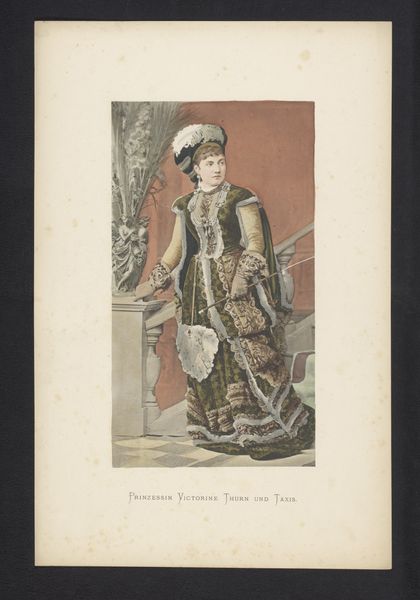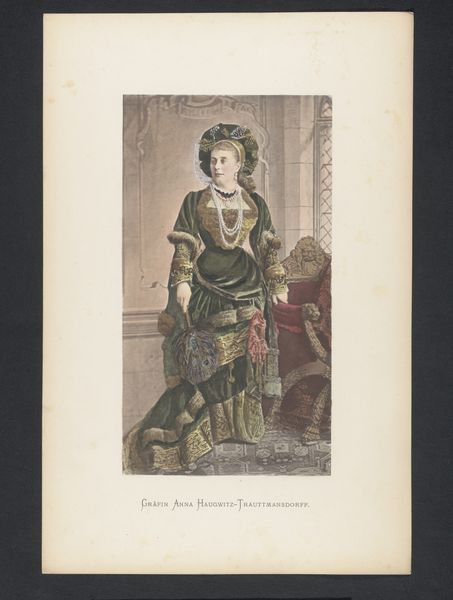
print, photography
#
portrait
# print
#
figuration
#
photography
#
genre-painting
Dimensions: height 367 mm, width 211 mm
Copyright: Rijks Museum: Open Domain
Curator: This is a photograph titled "Portret van gravin Elisabeth Kinsky von Wchinitz und Tettau," possibly created between 1880 and 1884. What's your first impression? Editor: It feels quite opulent! The colors, especially the deep reds and golds, suggest wealth and privilege. There’s a somewhat staged theatricality to it, wouldn’t you agree? Curator: Absolutely. The materiality of this print is fascinating. Look at the way the photographic base is overlaid with hand-applied color. It blurs the line between mass reproduction and unique, artisanal creation. Think about the labor involved—photographers, printers, and the anonymous hands carefully coloring each print. Editor: And consider the woman herself, Countess Elisabeth. These types of portraits weren't just about vanity; they were powerful statements about status and dynastic continuity within aristocratic circles. It tells us about the rigid expectations placed on women of her stature to maintain and project a specific image. Her costume, likely custom-made, speaks volumes about class and social standing. Curator: Yes, her attire, constructed from rich velvets and embellished with what appears to be metallic threads, would have been a considerable expense. The consumption of such goods fueled the textile industry and a vast network of craftspeople. We're seeing a material snapshot of late 19th-century capitalism in action. Editor: It's fascinating to situate this piece within the rise of photography as a tool of social documentation and control. While portraits were always commissioned, the reproducibility of photography allowed for the wider circulation of these idealized images. Did it democratize access or reinforce the existing power structures? It’s hard to tell, isn’t it? Curator: Indeed. It is a great illustration of the complexities inherent in images like this: on one hand, potentially available to many, yet intrinsically linked to ideas about status and economic inequality. I like thinking about what those colors really represented to people in this era and how much manual effort made this an exercise in specialized labor as much as art. Editor: So well said. Thank you! I found myself considering it within a narrative about power and identity, shaped by strict social expectations and, quite frankly, impressive material excess.
Comments
No comments
Be the first to comment and join the conversation on the ultimate creative platform.
